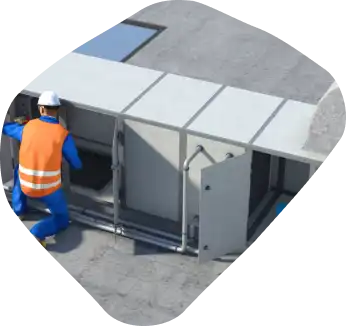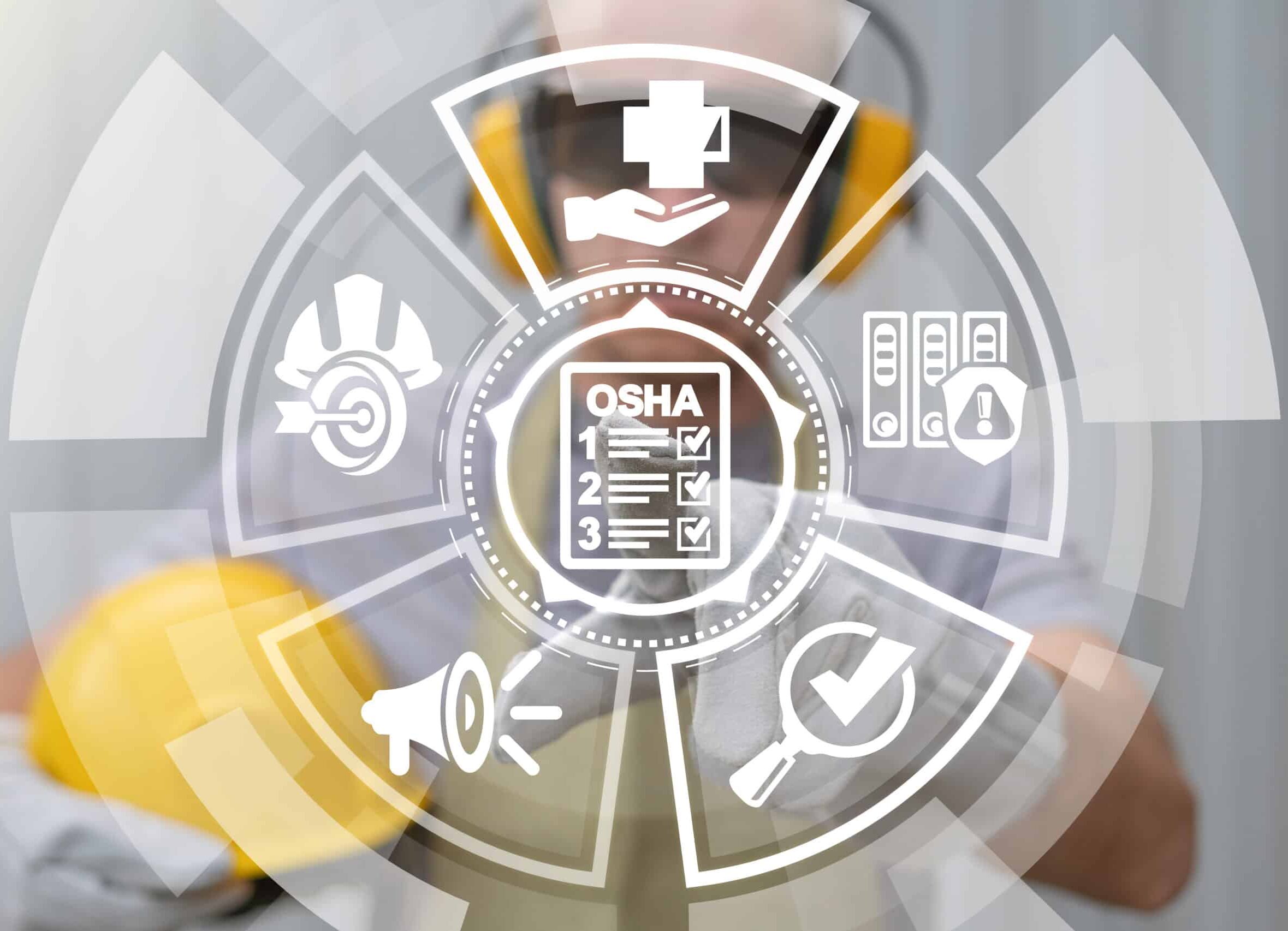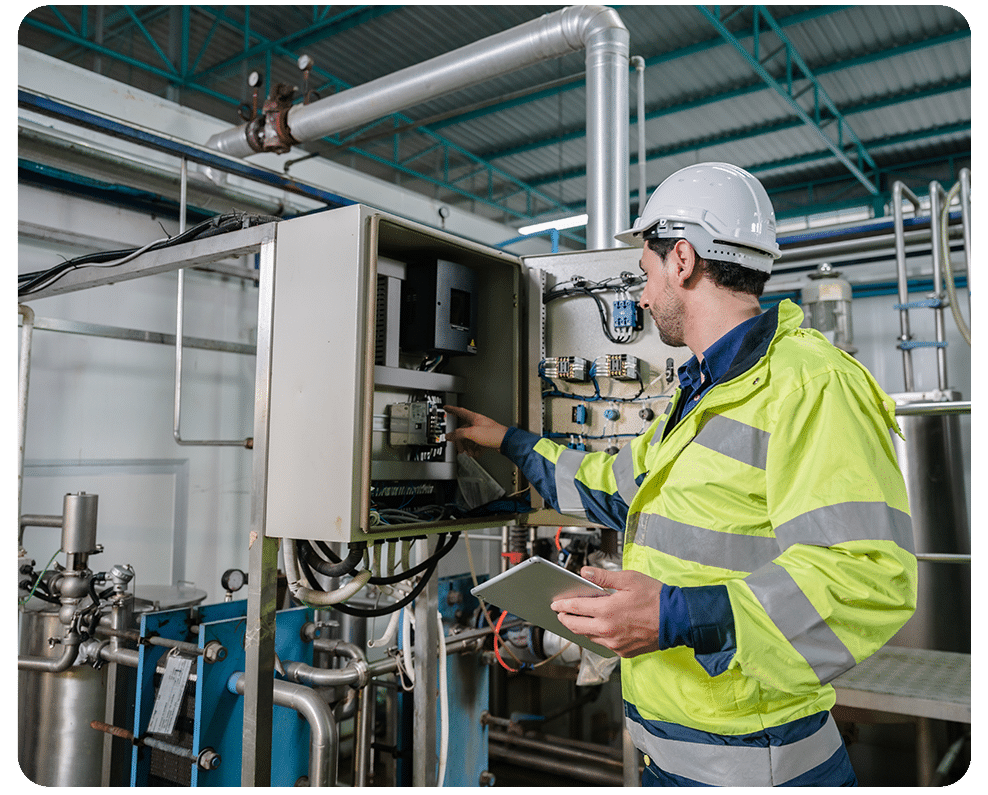March 15, 2024 5 min read

A Guide to Building Energy Management Systems (BEMS)
Industry:
Solution:

Building Energy Management Systems (BEMS) play a crucial role in optimizing energy usage within buildings, contributing to cost savings, environmental sustainability, and overall operational efficiency. The rise of energy management systems is a key facility management industry trend. Keep reading to learn everything you need to know about energy management and bring facility management into the future.
What is a Building Energy Management System?
A building energy management system is a centralized computer-based system that monitors, controls, and optimizes the energy usage of various building systems and equipment.
This technology connects the various systems within a building, including HVAC, lighting, equipment, and so on. This gives techs unique visibility into the energy consumption of a building. In some cases, a building energy management system might span multiple sites for even more control and oversight.
Ultimately, the goal of a robust energy management system is to use data-driven insights to optimize energy use across building systems.

Components of a Building Energy Management System
Energy management systems are composed of the following elements:
- Sensors and Meters. These sensors are used throughout a building to collect data on things like temperature, energy use, light levels, and so on. This data is collected in real-time to allow for rapid adjustments.
- Controllers. These are the tools used to control the building system’s components (e.g., change HVAC settings, dim lights, etc.).
- Centralized Management Platform. This is software that collates the data, analyzes it, and makes suggestions to optimize energy use while still maintaining comfortable building environments.
- Communication Networks. These networks allow BEMS to transmit information between the various components. It’s how sensors, meters, and controllers all can be managed through the energy management platform.
Why Are Energy Management Systems Critical for Facilities Management?
BEMS have many benefits for the facilities management industry.
The main goal of implementing energy management software is to conserve more energy. This, in turn, allows facilities management teams to meet sustainability standards and regulations.
Better energy conservation also then leads to another critical benefit: cost savings. The FM industry is currently facing drastic budget cuts. Nearly 60% of facilities managers have experienced budget cuts of up to 25% in the last year. So, this cost savings is critical to ensure safety standards are upheld and that maintenance can be done to make buildings greener, smarter, and more sustainable.
Another key benefit is that more automated energy management leads to more comfortable environments while also saving technicians’ time. Real-time data analysis, remote access and controls, and the ability to constantly regulate environmental factors is a more efficient and effective way to manage building systems. When you look at scaling BEMS across multiple sites, the efficiencies and benefits add up considerably.
Energy Management Challenges & Solutions
Energy management isn’t a new concept in facilities, but there are some new rising sectors that are impacting the future of BEMS.
- The rise of Electric Vehicles. The EV market is booming. But our current building and parking infrastructure is based on gas-based vehicles. It poses a unique challenge for FM. We now have to figure out how to change our parking structures to accommodate EVs and their energy requirements.
- The exploding Data Center sector. Data centers are a growing market. While these buildings serve a critical function for our society, there’s just one problem. They give off a ton of heat and use a lot of energy. Data center energy consumption is predicted to double by 2030 compared to 2022. FM technicians must be prepared to manage and balance those energy needs.
Luckily, our buildings are getting smarter. Smart buildings are going to be the future, with automation and control systems built in.
The best way to embrace the future and prepare for these trends is to start training your workforce. Vector Solutions offers numerous facilities management courses covering this topic from building automation to energy management.
Industrial Facility Management and Maintenance Training Library
Explore how you can reduce risks, close skill gaps, reduce operations and maintenance costs, all while increasing safety and productivity
View Library
How to Train Employees About Building Energy Management Systems
If you’re looking to evolve your workforce training program to include emerging topics like energy management, there are numerous best practices to follow.
- Use a blended learning approach. The work that facilities technicians and tradespeople do requires a mix of hands-on and online training. The most successful training approach is to use eLearning first to teach learners about a topic and then follow that up with on-the-job training where they can apply what they’ve learned. This reinforces the information and leads to better knowledge retention over time. Read our guide to learn more about blended/hybrid training approaches.
- Curate training plans for employees. As the FM industry changes and new technologies and best practices emerge, it’s necessary to cross-train your workforce. Using a learning plan is a great way to get started. Learning paths are customizable training plans that align to roles or important topic areas. Get a copy of our Learning Path for FM employees to get started.
- Select expert training providers. Managing all your facilities training is a huge undertaking. Navigating OSHA and industry regulations, creating or curating training materials, and reporting on progress takes a ton of time and energy. But it doesn’t have to be so complicated. Working with the right training provider can help you cover your bases, stay compliant, and expand your training offerings while also saving your organization money. Learn more about selecting online training.









